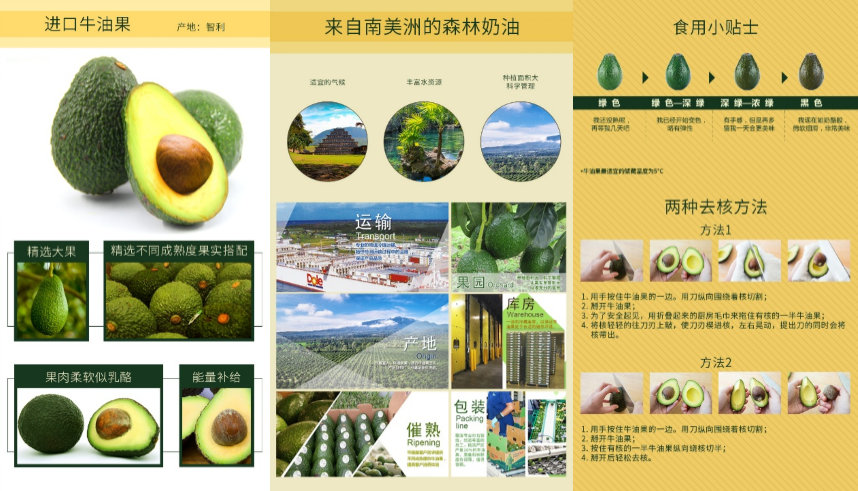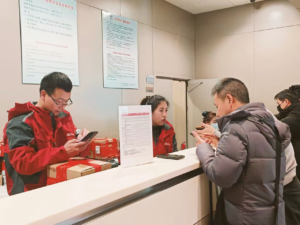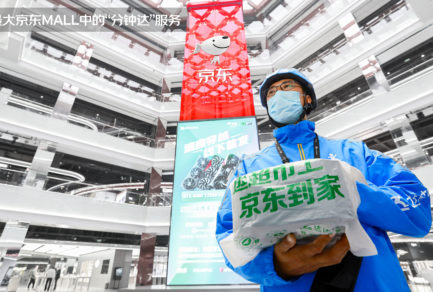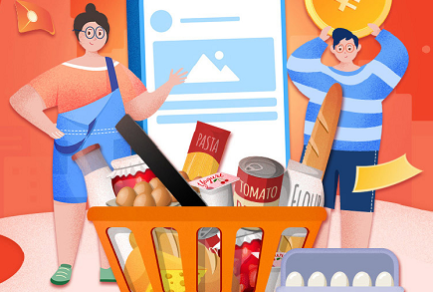May 15, 2020|
In-Depth Report: Winning the Appetites of Chinese Consumers
Using trust, reliability and convenience to tackle China’s grocery market
by Ella Kidron
In the last half-year, COVID-19 has undoubtedly accelerated the shift to grocery e-commerce around the world. China’s largest retailer, JD.com, saw fresh food sales in the month February alone increase 260%. From January 20th to February 28th, JD supplied 220 million items of rice, flour, and oil, meat, eggs, veggies, dairy and other fresh products, weighing over 290,000 tons. In first quarter earnings just announced today, revenues from sales of general merchandise products (of which fresh food and fast-moving consumer goods play a significant role) were RMB 52.5 billion (US$7.4 billion) for the first quarter of 2020, an increase of 38.2% compared with the first quarter of 2019. From January to March 2020, sales of chicken and eggs; vegetables; pork, beef and lamb; and grain, oil and condiments on JD increased 301%, 207%, 116% and 79% respectively.
iiMedia research expects China’s online grocery market to grow 62.9% in 2020, compared to 29.2% growth in 2019. Some question whether the rapid shift to online grocery will endure post-COVID-19, while others predict that it will. A report by top market research firm, Euromonitor, “COVID-19 Implications for Snacks in 2020”, writes that “the short-term acceleration in e-commerce under COVID-19 may result in consumers sticking to it in some markets”. The report highlights expedited shipping, immediate purchase and ease of availability and delivery as the key motivations for the move to online grocery.
Even before COVID-19 broke out, however, online grocery retail in China had already been gaining significant traction. According to a report by EMR titled, ‘China Online Food Grocery Market Report and Forecast 2020-2025’, in 2019 the market reached nearly USD $65.5 billion. While the e-grocery start-up sector in the country continues to soar, with funding reaching US $2.1 billion in 2019, according to IGD data cited by Food Navigator, a 25% increase from 2018, the market is still led by JD, the largest online grocery retailer, and Alibaba.
In comparison, the race for a share of the online grocery market in the U.S. has resulted in the emergence of a relatively long list of players – in addition to Amazon, top grocery players like Walmart, Kroger, Target and Aldi have invested in their own grocery capabilities or partnered with third parties like Instacart to compete with Amazon. 2019 e-grocery penetration in the U.S. reached 4.5% of the $839 billion grocery market (roughly $37.5 billion), according to figures from Deutsche Bank cited by e-fulfillment technology provider Fabric. Coresight Research estimates that online accounts for just 2.6% of the U.S. food and beverage market.
JD is seemingly the only retailer who has been able to crack the online grocery market. JD Super, the online supermarket brand of JD.com is the country’s largest supermarket online or offline. The company also has a growing brand of omnichannel supermarkets of different formats under the 7FRESH brand.
Some may say that the global pandemic is an anomaly which in some cases has given people no choice but to shop for their groceries online. There are, however, other factors at work. What else has it taken for JD to convince people to shop for their groceries online? It boils down to three things: Trust, reliable transportation and convenience.
It starts with trust
One of the biggest challenges that must be overcome to make online grocery work is how to make customers trust a process they cannot see. In traditional grocery shopping, the customer is in the ‘driver’s seat’. Walking through the fresh produce aisle in a supermarket, and don’t like the look of that apple? Simply skip it and pick another one. Prefer slightly smaller, darker-colored and sweeter pears? Spend a few extra minutes rifling through the box to pick the most ideal ones. The farmer’s market offers a different element of control – an opportunity to speak to the farmers, understand the origin of particular products, and even get recommendations on new things to try.
When grocery shopping goes online, however, much of that control is transferred to the retailer as soon as the customer places the order. Online descriptions and customer service representatives take the place of in-store shop assistants and farmers. The question of which pears are put in a customer’s basket is 100% the retailers call. Whether or not the items arrive at the door unscathed and on time is dependent on the logistics provider’s care and attention to detail. For items like dairy products, there is little way to check that the products have been refrigerated at the right temperature during the entire process, unless they emit a particularly foul odor.
As such, it is incumbent on an online retailer to establish an extraordinary level of trust with customers to make online grocery work. It covers the pre-sale process where customers can research which products to buy, the actual picking process once the order is placed, and finally the logistics process from the warehouse (or multiple warehouses depending on where the product is coming from) down to the last mile to the customer’s door. If any link in the chain is broken or lagging behind, it can affect the entire experience. This is important globally, but particularly in China where food safety incidents have made consumers hyper-cautious about what they buy and where they buy it from.
At the same time, as demonstrated by JD, online grocery offers a tremendous opportunity to demonstrate trust to consumers. With JD’s solution, the entire supply chain of a particular product from procurement to storage is easily laid out on the product description page. There are even some hints as to how best to enjoy the item, whether it is a recipe or a suggested combination of ingredients. In some cases, food products can even be traced with blockchain, providing access to information ranging from the contact details of the team performing quality control to the license plate of the delivery truck that transported it to the warehouse, as well as more accessible information like how the product was stored.

Detailed information about avocados for sale through JD’s first party retail business
Another huge benefit of online grocery retail is product selection. Whereas grocery stores have limited space and limited inventory, an effective e-commerce grocery selection greatly expands choice. During JD’s Singles Day (November 11th) sales period in 2019, imported milk sales and sales of Penfolds wine were up 5 times the same period in 2018, while a2 milk sales were up 2.5 times. All products that are not necessarily found in typical local brick and mortar, non-specialty grocery stores (with the exception of omnichannel models – more on that later).
From trust to transportation
With traditional grocery shopping, once the process is completed, groceries are bagged and the customer puts them in their car or on their backs for the journey home. Once at home, they are put in the fridge or freezer. To convince customers to shop online instead, the speed of delivery needs to be at, or at very least, close to that of the consumer taking the product home themselves for basic necessities, and within a day or two for things that might not be needed as urgently. Above all, quality needs to be guaranteed.
JD’s self-operated nationwide logistics network makes it stand out in this regard. First, JD is able to deliver over 90% of orders same- or next-day to customers all across China. Second, JD Logistics is the only B2C e-commerce logistics company covering six major networks – normal-sized items, bulky items, cold chain, B2B, cross-border and crowdsourced logistics, with over 730 warehouses covering approximately 17 million square meters. Cold chain that stands out here because it allows for the safe transport of temperature-sensitive goods along the supply chain.
Put simply, cold chain logistics includes all of the means used to ensure a constant temperature for a product that is not heat stable, from the time it is manufactured until the time it is delivered. It includes cold storage, cooling systems, cold transport, cold processing and cold distribution. The ins and outs of it are highly complex – Proper sanitizing, cleaning and sorting must be done prior to packaging and loading to prevent product quality issues; proper packaging is important to prevent contamination; all steps of cold chain supply management need to be well-documented; time tables need to be kept to; and any temperature variation, whether from human intervention or weather conditions, can be detrimental to the process.
JD first entered the cold chain logistics industry in order to support its fresh food business back in 2014. JD currently operates 20 cold chain warehouses covering four different temperature levels – cryogenic, freezing, refrigerated and temperature-controlled. The company’s cold chain network (which integrated F2B2C –farm/factory to business, or farm/factory to customer directly, covering B2B, B2C and more) includes sophisticated cold chain technology, as well as cold chain trucks, warehouses and even cold chain specific delivery boxes. The delivery boxes are reusable and can be left outside for the courier to pick up when convenient. With all of this, JD can control the transport of temperature sensitive products all the way from farms down to the last mile.

JD warehouse worker in cold chain warehouse
One anecdote, reported by Forbes Asia several years ago, shines a light on how much attention the company attaches to quality logistics. Chairman and CEO Richard Liu ordered ice cream through JD that arrived slightly melted. According to the report, Liu said that there would be no further expansion of the company’s new grocery delivery business until the problem was fixed.
Omnichannel: Enhanced convenience
Same- and next-day delivery is already well above the industry standard. For customers who are used to taking their groceries home right away, however, it’s not enough to convince them to shift online. JD offers a mix of omnichannel solutions to solve this problem. Omnichannel Fulfillment (referred to as 物竞天择 in Chinese), an innovative inventory integration model which sources inventory from offline stores nearest to customers, rather than having the goods come from warehouses. Through the program, delivery is available within as fast as 30 minutes to an hour. JD’s 7FRESH supermarkets also offer an omnichannel option where customers can either go into the store themselves or opt for delivery via the app, receiving items in as fast as 30 minutes within a 3km radius of the store. While consumers may be willing to wait a day for imported seafood coming from Canada (in the case of 7FRESH, however, they actually wouldn’t have to), they may be less willing to wait for essentials like oil or rice. Omnichannel is helping to address the immediacy of some consumer needs.
At the end of the day, however, it still comes back to trust. Because consumers inherently trust JD – due to a long-term effort to build a reputation for authenticity, high quality, and exemplary service, and strong technology capabilities that serve as the engine driving the process – they are willing to put their fate of their bellies (and by extension, other important aspects of their lives) in the company’s hands.

 This Harbin tourism boom has also spurred a surge in sales of winter apparel. JD.com’s data indicates a rapid growth in the sales of warm clothing items such as down jackets, snow boots, and thermal underwear between January 1st and 7th. The sales growth is especially pronounced in southern provinces and cities such as Jiangsu, Zhejiang, Guangdong, Sichuan, and Shanghai. Notably, tall snow boots registered a 206% year-on-year increase in transactions, while padded cotton caps and thickened long down jackets soared by 158% and 134%, respectively. Beyond clothing, travel gear has also seen a considerable uptick, with a 98% year-on-year growth in transactions for large suitcases and travel backpacks in these southern regions.
This Harbin tourism boom has also spurred a surge in sales of winter apparel. JD.com’s data indicates a rapid growth in the sales of warm clothing items such as down jackets, snow boots, and thermal underwear between January 1st and 7th. The sales growth is especially pronounced in southern provinces and cities such as Jiangsu, Zhejiang, Guangdong, Sichuan, and Shanghai. Notably, tall snow boots registered a 206% year-on-year increase in transactions, while padded cotton caps and thickened long down jackets soared by 158% and 134%, respectively. Beyond clothing, travel gear has also seen a considerable uptick, with a 98% year-on-year growth in transactions for large suitcases and travel backpacks in these southern regions.
 JD.com Announces First Quarter 2020 Results
JD.com Announces First Quarter 2020 Results



